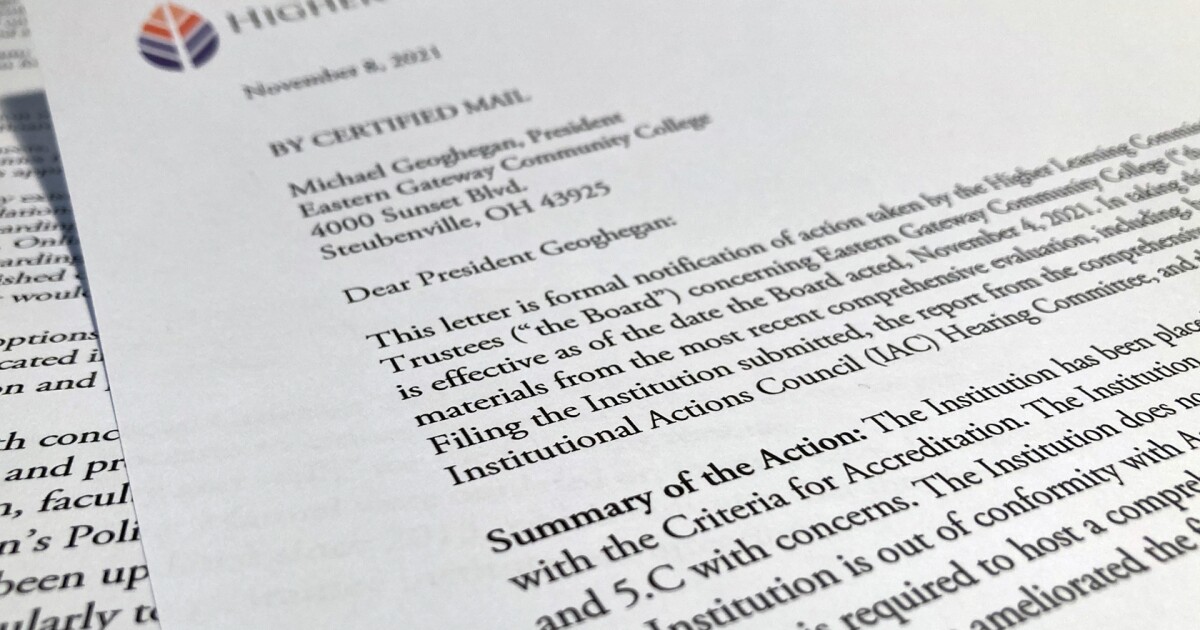[ad_1]
Data are most compelling when they’re used to tell a story. So let’s start with one of my favorites.
When it comes to transfer champions, Robert (Bob) Templin is one of the greats. While president of Northern Virginia Community College (NOVA), one of the largest community colleges in the country, Bob advocated for increased and more equitable opportunities for transfer students. He brokered programs like Pathway to the Baccalaureate, designed to catapult students of color from modest means to economic mobility and security. He understood the importance of transfer, in part because he had been a transfer student and experienced the transformative power of the pathway firsthand.
One year, Bob had a special guest at NOVA’s commencement ceremony: the new president of George Mason University, NOVA’s main transfer partner. Bob wanted to make a lasting impression about the importance of community college transfer to the university, so he asked the new president to shake the hand of every Mason-bound graduate. It was an important moment in cementing what would become one of the most successful transfer partnerships in the nation. A few years later, on the eve of Bob’s retirement from the NOVA presidency, George Mason returned the favor, hosting Bob at the university’s commencement. The George Mason president asked graduates to stand if they had transferred from NOVA. Bob will never forget the thunderous sound of thousands of people rising to their feet, the unassailable symbol of their success, diversity, and sheer numbers on display for all to see.
What does this story have to do with data? Both presidents knew the power of these gestures because they both knew the numbers.
The most successful transfer partnerships often rely on data to make the case for investment, set strategic direction, and create a culture of continuous improvement. Unfortunately, most institutions can’t rely on federal or state-level requirements to guide reporting of even the most basic community college transfer measures. For instance, even when states report transfer student outcomes, those data are often unavailable disaggregated by race, ethnicity, or income. Leaders need to invest their time, influence, and resources to enable the necessary internal processes, infrastructure, and capacity to get this fundamental information.
The investment level may differ—assigning staff to create a manual patchwork of data from different institutional or state-level sources, hiring vendors to organize basic data, or forming a major data-sharing agreement with high-tech dashboards among transfer partners. To help guide those investments, at the Aspen Institute College Excellence Program, we synthesized four ideas from our Tackling Transfer report on evaluating transfer:
- Know the basics: How many of your students are current or prospective transfer students? How many transfer and/or graduate with a bachelor’s? How long does it take, and how much does it cost to complete their degrees? What proportion of your enrollments and completions relies on transfer pathways? Where are there inequities by race and ethnicity, income, or other student subpopulation? Every community college and university leader should have the answers to these questions.
- Set goals and use them as a framework to audit transfer data needs: According to the leaders and practitioners we’ve worked with, sometimes the challenge with transfer data is that the data aren’t collected. For instance, some community colleges do not ask bachelor’s intent, while some universities do not include key identifiers for community college transfer students in their student information systems. Even when the data are not yet available, setting longer-term transfer goals can provide a helpful framework for institutional research analysts to understand whether their institution’s data collection, entry, and warehousing systems would support the evaluation of desired outcomes. Examples of state-level goals can be found in this report.
- Turn transfer student experiences into data: Qualitative data from transfer-specific student focus groups and surveys provide essential information about transfer student experiences. The qualitative assessment is essential to interpreting the outcomes data and how they relate to transfer practice and policy.
- Create spaces for key stakeholders to engage with the data: This step is too often underappreciated. Leaders should invest in building routine, structured venues where staff, faculty, and advisors– both within and across partner institutions– can examine transfer student success and equity data and connect it to practice reform. Benchmarking those data against clear and measurable goals helps set the expectation that transfer practice and policy reform is data-driven. These routines are essential to a continuous improvement mindset.
One last idea is to use transfer data to tell transfer stories, just like the one I started with. We don’t have to look far to find stories of transfer students using their talents in extraordinary ways or find accounts of transfer students getting snared in the complexity of systems not designed for them. Both sides need to be told. Data demonstrate that these are not random anecdotes; these stories belong to the 80 percent of entering community college students who want a bachelor’s degree. If anyone needs convincing, ask the transfer students in your graduating class to stand. You probably won’t be able to count them, so make sure your team has collected the data.
Tania LaViolet is a director at the Aspen Institute College Excellence Program.
[ad_2]
Source Link




